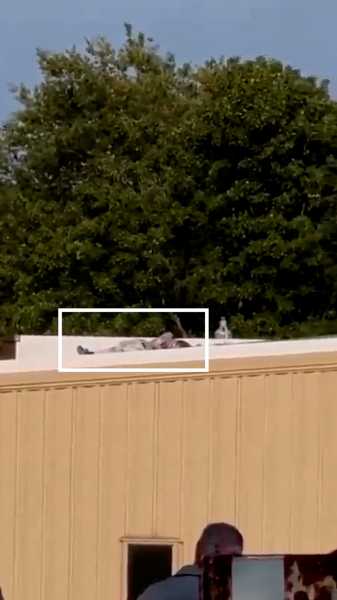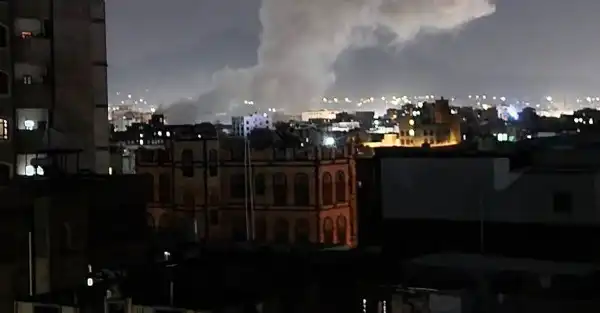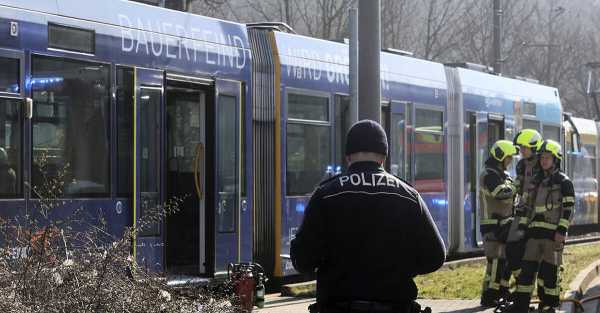An audio analysis by The New York Times and an another expert suggested that eight shots had been fired by the gunman.
- Share full article
Video

By Christiaan Triebert, Alexander Cardia, Devon Lum, Aric Toler and Riley Mellen
- Published July 13, 2024Updated July 14, 2024, 4:33 a.m. ET
Two videos posted on social media that were verified by The New York Times appeared to show the person suspected of shooting at former President Donald J. Trump lying motionless on the roof of a small building roughly 400 feet north of the stage Mr. Trump was speaking from.
The location of the body matches the likely firing position. An audio analysis of the gunfire determined it came from approximately the same distance as the body’s location, and the visible injury to the right ear of Mr. Trump, who was facing northwest, was also consistent with gunfire from that direction.
A spokesman for the Secret Service, Anthony Guglielmi, said the suspected gunman “fired multiple shots toward the stage from an elevated position outside the rally venue.” The suspect had been killed, the Secret Service said.
The audio analysis of the gunshots conducted by The Times and Robert C. Maher, a gunfire acoustics expert at Montana State University in Bozeman, indicates that two bursts of shots were fired. Both the first round of three and the second of five shots were fired approximately 330 to 390 feet from the C-SPAN microphone Mr. Trump was speaking into. That location was consistent with the location of the suspect’s body. There was no significant difference between the sound of the eight shots, which suggests that they likely came from the same firearm, Mr. Maher said.
A witness told the BBC that he saw an armed man in “in muted colors, tan-typed clothing” climbing up the roof of a building of the same compound captured in the videos. The witness, who gave his name as Greg, said he attempted to alert the police to the man’s presence, minutes before the shots were fired.
Christiaan Triebert is a reporter working on the Visual Investigations team, a group that combines traditional reporting with digital sleuthing and analysis of visual evidence to verify and source facts from around the world. More about Christiaan Triebert
Alexander Cardia is a designer, animator and graphics editor with the Visual Investigations team at The Times. He was among the recipients of the 2023 Pulitzer Prize for International Reporting for coverage of Russian atrocities in Bucha, Ukraine. More about Alexander Cardia
Aric Toler is a reporter on the Visual Investigations team at The Times where he uses emerging techniques of discovery to analyze open source information. More about Aric Toler
Riley Mellen is a reporter on The Times’s visual investigations team, which combines traditional reporting with advanced digital forensics. More about Riley Mellen
See more on: Donald Trump, 2024 Elections
- Share full article
SKIP ADVERTISEMENT
Source: nytimes.com



